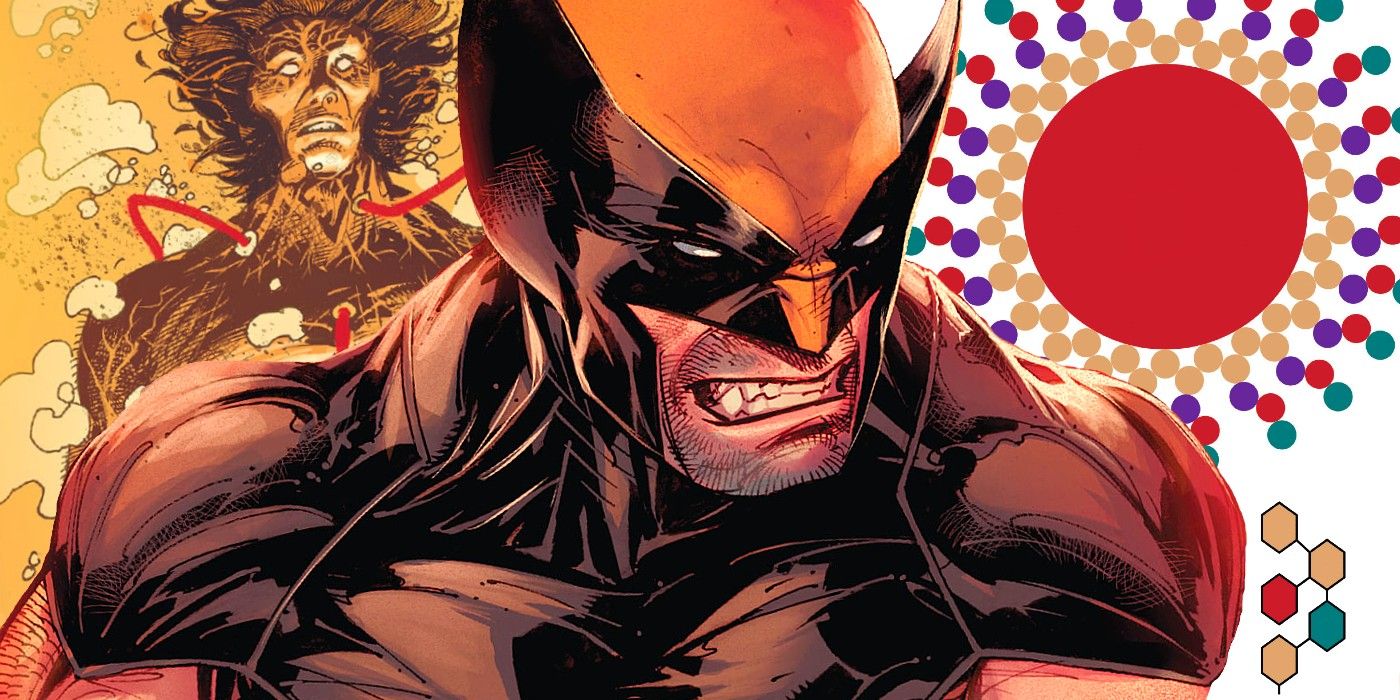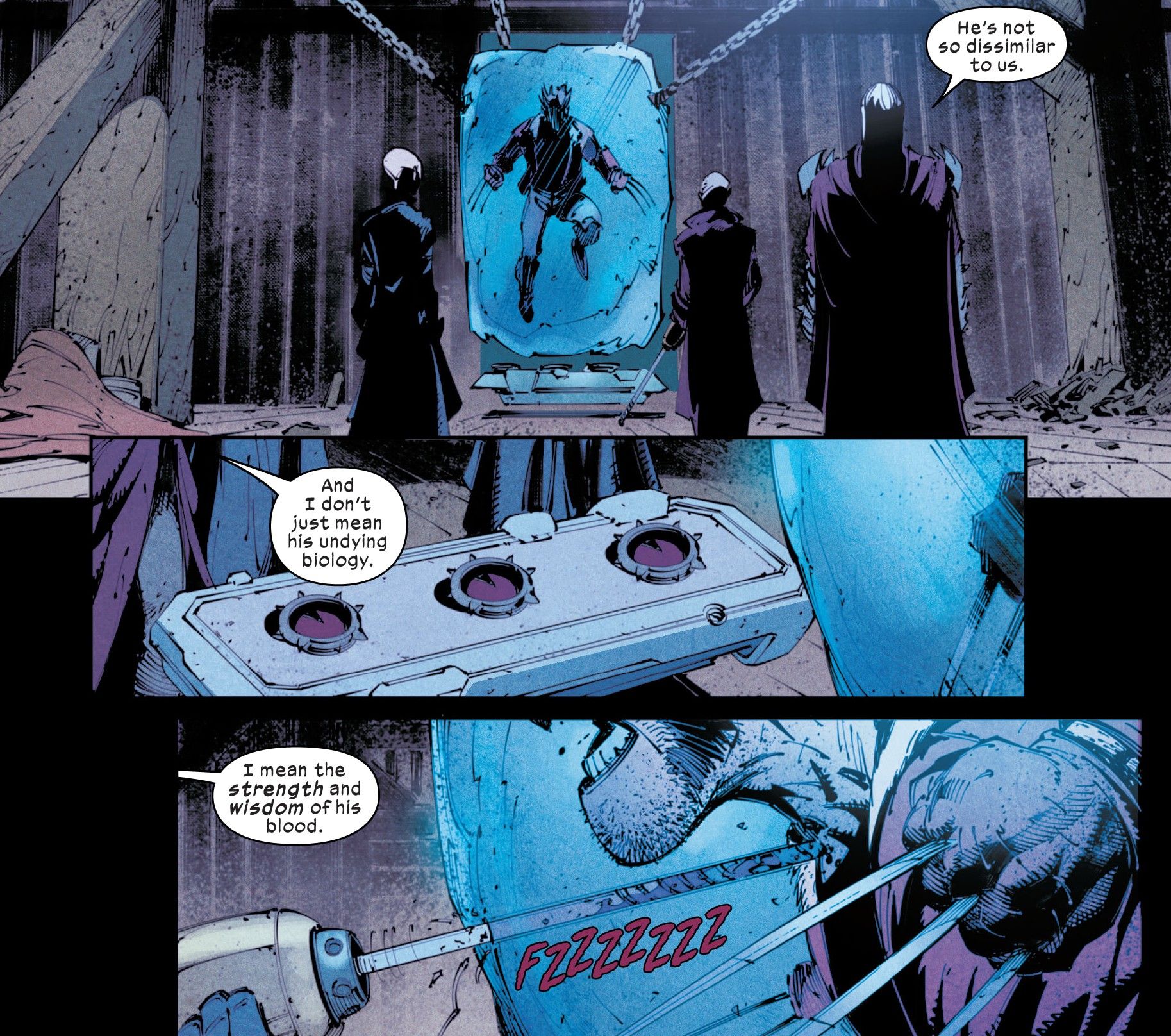Warning: contains spoilers for Wolverine #12!
Wolverine has one of the most powerful healing factors in comics, and recent issues of his solo series have delved into explaining exactly what it is about Logan's biology that allows his body to regenerate, healing the damage from being shot, stabbed, burned and blown up over his career as a superhero.
Dracula recently founded his own nation of vampires, and has begun using Wolverine's stolen blood to empower his followers to withstand daylight and enact his horrific agenda around the world, forcing Dr. James Boggs of Oxford University to study Logan's blood and reveal its secrets. Elite vampires have taken to wearing 'bloodclocks' - devices which use Logan's healing factor to stave off both their weakness to sunlight and their need to feast on human blood. But it's not just that vampires metabolize Wolverine's blood in a useful way, but that his powers have a surprising connection to those of Marvel's vampires.
In Wolverine #1 - from Benjamin Percy, Adam Kubert and Viktor Bogdanovic - Dr. Boggs states that Wolverine's blood bears a striking resemblance to that of vampires, with some notable differences. First, that it doesn't deteriorate under ultraviolet light, but more importantly that it is more stable and less virulent. Vampire blood confers incredible strength and durability, and even a small amount can turn the recipient into a creature of the night, but it requires daily 'dialysis' that creates their thirst for blood. In contrast, Wolverine's blood retains its special properties for a minimal amount of time when outside his body, but is far, far more resilient than a normal human's. Because of this contrasting relationship, Dr. Boggs theorizes that, "You could say their blood belongs to the same group, but a different type. One positive, the other negative. Instead of A or B or AB or O, one might call it E -- the endless." But Wolverine #12, from Percy and artist Scot Eaton, goes even further in explaining exactly what's so special about Wolverine's body in relation to his powers.
In this issue, Dr. Boggs continues his study of Wolverine's powers, even as Dracula's influence begins to erode his sanity. In a hurried explanation of Logan's special abilities, he explains that Wolverine's hemoglobin count is 30 grams per deciliter, and that his healing factor is so powerful because his veins are carrying "a nuclear arsenal of protein." Boggs theorizes that Logan's stem cells are effectively the fountain of youth, and wishes he could sample his bone marrow to find out more. Boggs explains that, "if a normal cell is a cardboard box -- simple, flexible, but sturdy in its structure -- Wolverine's is a brick house of many rooms and hallways with a fireplace roaring at its center."
The nature of Wolverine's powers as expressed by Dr. Boggs answers a few fan questions about Logan's healing factor. In past comics, Wolverine has survived having the skin and muscle stripped from his bones, and even regenerated from a single drop of blood (albeit a drop that landed on the Crystal of Ultimate Vision, connecting him to cosmic power levels.) That his blood is so dramatically different from that of a human answers some lingering questions about the nature of Wolverine's powers, and likewise the vital importance of his bone marrow answers how he's survived injuries that fans believed should have killed him - a particularly satisfying detail to see confirmed, since it validates the necessity of the adamantium covering Wolverine's bones and therefore protecting the 'fountain of youth' that always brings him back.
Dr. Boggs' study puts the final nail in the coffin of the idea that Wolverine's healing factor is simply a faster version of normal human healing, and justifies his blood as one of the rarest and most valuable substances in the Marvel Universe, with the catch that it loses its special properties soon after being taken. Logan may be an everyman hero, but Boggs makes a compelling case that his powers are also the biological flipside of vampirism - mixed news for Dracula, as while this facilitates the use of his new bloodclocks, it also means Wolverine now feels a personal responsibility for wiping out the supernatural predators.



